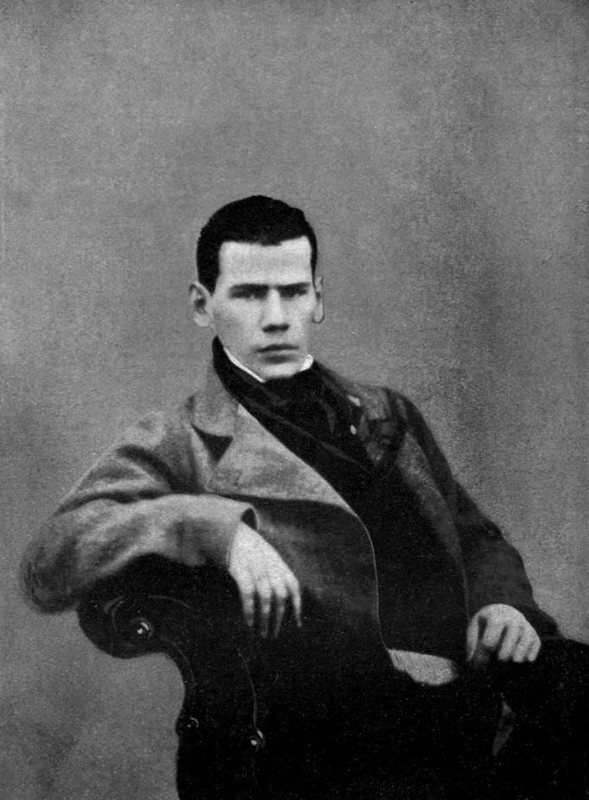The Purpose of History: A comparative reading of Nietzsche and Tolstoy
What is the purpose of written history? As early as from the Renaissance through the Enlightenment, historical writing has been considered as a means to teach morality through examples. Primarily pedagogical and rhetorical, historical writings has been a branch of factual knowledge that rejects any literary or fictional component. In the late nineteenth century, however, historical writings start to become more integrated with philosophy and literature. Although such mixture was less recognized than the persisting notion that history is a science of of genealogy and factual narrative, historical writings is gradually given a new purpose. Such purpose is embodied in Leo Tolstoy’s “War and Peace”, and Nietzsche’s “On the Uses and Disadvantages of History for Life”, and it is to bridge the past with the presence so as to call for actions.
In Nietzsche’s words, historical writings should be given a purpose that is the opposite to that of “instruction without vitality, knowledge which enervates activity, and history as an expensive surplus of knowledge and a luxury”. According to Nietzsche, history is an active force in shaping and driving the present rather than a distanced display of facts and numbers. He argues that the value of history lies in its connection with the present life, which is the opposite to conventional ideas of history as a registration of the past. In another word, Nietzsche’s history actively engages in, relates to and impacts life of the present.
This conception of history as an enlivened past that connects to the present is similarly manifested in Tolstoy’s “War and Peace”, as he constructs a fictional world that carries the historical events in an engaging manner. By giving detailed accounts of events and the character’s activities, Tolstoy conveys to the reader what it felt like to fight in a battle, to be wounded, march beyond exhaustion, suffer imprisonment or risk death in the unpredictable warfares. For example, in part 2, chapter 18, when Tolstoy describes the battle of Barodino, he employs an abundant amount of details and descriptions to render the chaotic atmosphere and a sense of desperation that characterizes the historical event. From Napoleon’s perspective, the reader is as if immersed in the scenario, and witnessing “the sun rose brightly”, “smoke spread in front of the flèches”, and “shouts of men were occasionally heard through the gunfire”. Although “War and Peace” is not entirely a fictional narrative, at times when it does go into the details of presenting an immersive story, Tolstoy is masterful in rendering the scenes, smells and taste of war. By presenting history in which emotions, sensations and different perspectives of the characters are given adequate attention besides rational facts, Tolstoy grounds “War and Peace” in human experiences to which the reader can relate and become emotionally attached. By resonating with what’s on the page, the reader brings the history to life, investing their present experience and allowing the history to impact their perception both in and outside of the story.
With the emotional foundation and the immersive context, “War and Peace” is made relatable to the reader, who resonates with Nietzsche’s argument on the purpose of history. In addition to the bridge between history and present that is based on pathos, “War and Peace” also relates to “life and action”, according to Nietzsche’s vision, by including philosophical discussions on it’s own narratives. In the same example where Tolstoy writes about the battle of Baradino, immediately after the description of the battle, he presents a passage of discussion that, in comparison to the subjective narrative, reads more like an objective commentary. Tolstoy writes “…in battles it is a matter of what is dearest to a man—his own life—and it sometimes sees that salvation lies in running back, sometimes in running forward…”. Tolstoy highlights the chaos of the battle, and in doing so points to the chaotic nature of human history. He leaves the reader with not only historical facts and narratives, but also assessments that rationalizes the history into something that can be projected to the present life, which in Nietzsche’s quote from Goethe, “enlightens [ones] activity”. As Nietzsche points out in his argument that, history ought not to be an escape for people who are unwilling to immerse in the present or who tries to “gloss over the egotistical life”, moments of rationalizing history in order to better project it into the reader’s present lives are crucial to preventing “War and Peace” from becoming too emotionally grounded.
However, there are places in “War and Peace” that seems to follow the negative example given by Nietzsche, the historical account is more an escape from historical facts rather than a bridge of connection between the present and the past. The moments when Tolstoy pays intense attention to details of the character’s emotions or thoughts are most likely to be accused of bearing the purpose of escape, as the reader may be too absorbed in the story and thus infringe the integrity of historical quality of War and Peace. Nevertheless, it is important to see how Nietzsche’s idea of a purposeful history resonates with “War and Peace” in their connection with the present and the individual experience. This poses a challenge to the conventional idea of history as something that solely belongs to the past, as Nietzsche and Tolstoy show in their writings, history is not to be put behind dusty glass cases but to be invigorated by life in the present.
Work Cited
Leo Tolstoy, War and Peace
Friedrich Nietzsche, On the Uses and Disadvantages of History for life
wikipedia



